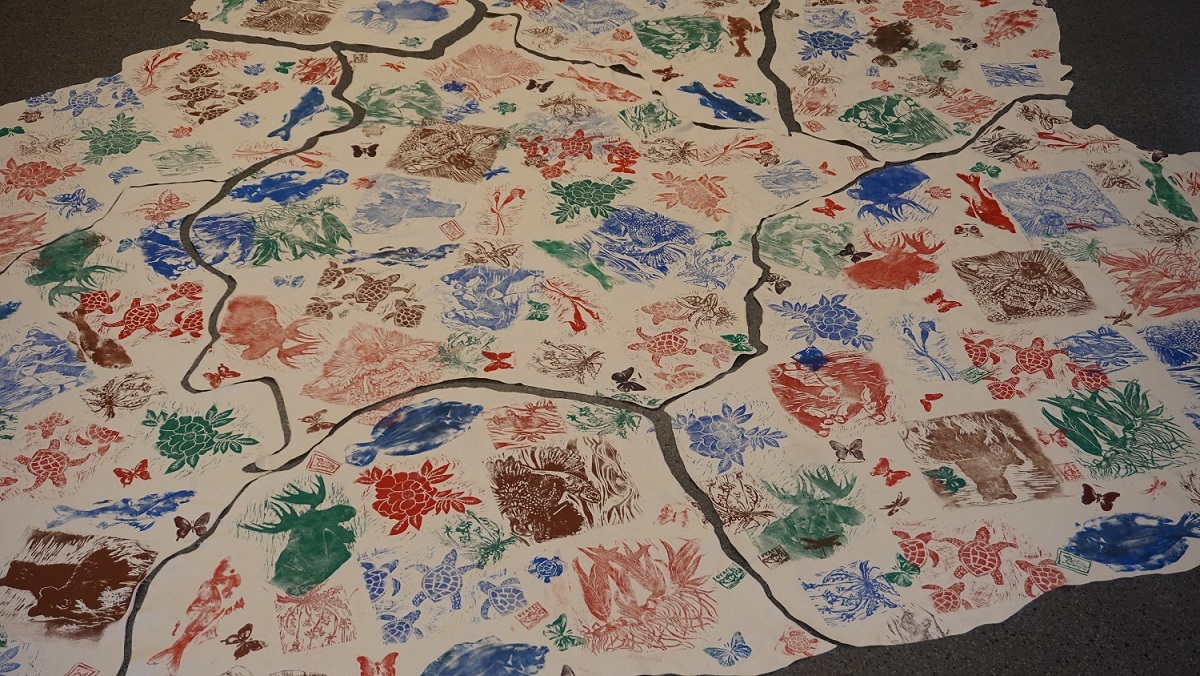Connecting with the Past and the Future of Indigenous People
By Noémi Giszpenc
In June of this year, CDI and CFNE staff and board members had the chance to participate in a workshop offered by Wabanaki Reach on the 400-year history of colonization experienced by Indigenous people in our region and perpetrated by successive waves of settlers. There is a strong connection between that history and the current climate crisis and terrifying future that awaits us. Part of addressing the unfolding climate catastrophe must be to understand the destructiveness of a colonialist mindset, which is eager to extract riches and abandon responsibility.

Thankfully this reflection is not merely metaphorical. Indigenous people are here and active in asserting a right to a thriving, healthy life. How can we make our work a part of this life-building project for people and the non-human world? Are there lessons to be learned from indigenous people’s “old-growth” cultures, as Robin Wall Kimmerer describes them? Can we reshape our relationship with the earth and become stewards and healers? How does this relate to social healing?
Unfortunately, given the cruel history and current reality of destruction, these questions do not have easy answers. Here is an excerpt from Layli Long Soldier’s book of poems, Whereas:
Dear Girl, I went to the Indian Health Services to fix a tooth, a complicated pain. Indian health care is guaranteed by treaty but at the clinic limited funds don’t allow treatment beyond a filling. The solution offered: Pull it. Under pliers masks and clinical lights, a tooth that could’ve been saved was placed in my palm to hold after sequestration. Dear Girl, I honor your response and action, I do. Yet at the root of reparation is repair. My tooth will not grow back. The root, gone.
Complicated pain means repair is complicated, too. As Erica Buswell, a former CDI Board Chair, wrote earlier this year, realizing that our “good” intentions can cause harm is painful, and imagining how to do good work that supports Native sovereignty and self-determination is not always straightforward. Yet the very fact of asking the question can prompt a pause, a change, a movement that takes us in a different direction.
At CDI, we have quite a journey ahead of us. Our work regularly gives us the opportunity to help people gain ownership over their homes and livelihoods. But we rarely, if ever, stop to consider what impact we may be having on a settler colonial level on the Native communities of the Northeast. And, while our work is rooted in cooperative values, we do not practice sustainability in our operations, for example for our electricity use or travel.
Ideally, those of us who are not indigenous to our region could “indigenize”, come to see ourselves as part of the land and mutually responsible for its and each other’s well-being. With so many institutions built to buttress or accelerate colonization, this is not easy. However, the prospect of living with the effects of catastrophic climate change doesn’t sound easy, either.
What are your ideas for building a solidarity economy that indigenizes how we meet our needs? What are your ideas for healing the complicated pain of colonialism?
